#N.F.S. Grundtvig
Text

Grundtvigs Kirke, located in Copenhagen, Denmark, is a renowned neo-Gothic church designed by architect Peder Vilhelm Jensen-Klint in 1921. This architectural masterpiece, named after philosopher N.F.S. Grundtvig, boasts impressive vaulted ceilings and stunning stained glass windows. It's a must-visit landmark for those interested in history and architecture in Copenhagen.
📸: Jenny Olsson
#dark academia#light academia#classical#academia aesthetic#escapism#academia#books and libraries#classic literature#books#architecture#building#historical#Coppenhagen#denmark#Grundtvigs Kirke#Peder Vilhelm Jensen-Klint#architect#neo gothic#church#1900s#20th century#N.F.S. Grundtvig#philosopher#royal core#cottage core#aesthetics#academics#mood#vibe#tumblr
378 notes
·
View notes
Photo

N.F.S. Grundtvig (September 8, 1783 - 1872) was a Danish psalmist and educational reformer - and in addition one of the first to render the Old English epic poem, Beowulf, into a modern language...
1 note
·
View note
Text
Norwegian SE-RPR, OSL ENGM Gardermoen
Norwegian SE-RPR, OSL ENGM Gardermoen
Boeing 737-800, cn 42081, N.F.S. Grundtvig
See it here: https://flic.kr/p/2m6ququ

View On WordPress
1 note
·
View note
Text
It’s time to undermine a beloved Frozen 2 reference!
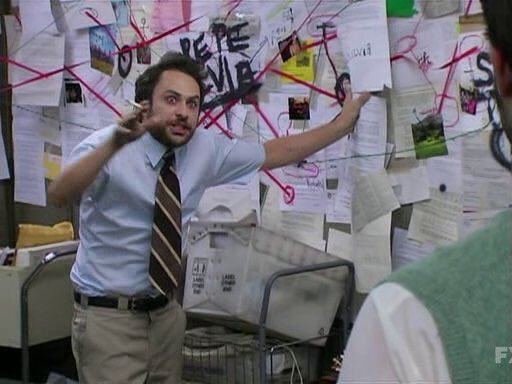
So we know Frozen Fever takes place in 1840, which means the first Frozen takes place in 1839 and Frozen 2 takes place in 1842. The harvest festival around the start of the movie implies Frozen 2 takes place around the end of September, perhaps the start of October 1842.
The Enchanted Forest was locked down for 34 years, 5 months and 23 days. This means the Enchanted Forest battle took place around May(?) 1808, which is also when Agnarr first met Iduna. In a magic flashback which takes place maybe a year later, not much more, Iduna asks Agnarr what he's reading and he says it's by 'A new Danish author'.
People believe that to be a reference to Hans Christian Andersen, but that's impossible because his first known story stems from the 1820s and wasn’t discovered till 2012. His first actually successful story stems from 1829, and that was still just a short story, not a book.
SO I MEAN...
Nikolaj Frederik Severin Grundtvig is another famous Danish author, who released Northern Mythology (Nordens mythologi) in 1808 and The Fall of the Heroic Life in the North (Optrin af Kæmpelivets Undergang i Norden) in 1809, plus two lesser known earlier stories in 1806 and 1807. This means N.F.S. Grundtvig fits the reference far more.
This concludes ‘Frozen 2 tidbits you did not ask for’.
49 notes
·
View notes
Quote
“I would like to be a little king myself and see nothing but small kings around me, provided we have learned the noblest of all arts: the royal art of controlling oneself.”
N.F.S. Grundtvig
0 notes
Photo

ART (Copenhagen) | Danish Golden Age – World-class art between disasters
The Danish Golden Age of art is currently attracting plenty of attention from museums and art collectors all over the world, and paintings from the period are fetching large amounts at auctions in Denmark and abroad. From August 2019, SMK will welcome visitors to the largest exhibition – supported by two foundations – ever staged about the Golden Age of Danish art. The exhibition will offer opportunities for revisiting familiar classics and discovering rarely shown works.
N.F.S. Grundtvig, Hans Christian Andersen, Johanne Louise Heiberg and Søren Kierkegaard. Even though Denmark’s very existence was threatened on several occasions during the nineteenth century, the period also brought forth some of Denmark’s greatest cultural figures ever, becoming one of the most creative eras in Danish art and culture. We got a Danish Golden Age. And in many ways, the artists of the Golden Age created the image of Denmark and Danish landscapes that we have known and cultivated ever since: the majestic beech forests, the golden coasts and the well-groomed interiors of bourgeois homes.
This August, the National Gallery of Denmark (SMK) will show a comprehensive exhibition about the Danish Golden Age: numbering more than 200 paintings and drawings from the period 1807 to 1864, this will be the largest presentation of Golden Age art ever accomplished in Denmark. The exhibition is produced in collaboration with Petit Palais in Paris and the National Museum in Stockholm, which owns the largest collection of Danish Golden Age art outside of Denmark.
International interest in Danish Golden Age art has been on the rise in recent years; auction houses see growing international demand, and several of the world’s leading museums have acquired works from the period. Their number includes the Louvre in Paris, the National Gallery in London and the Metropolitan Museum of Art in New York.
24 August – 8 December 2019
The national gallery of Denmark
0 notes
Text
I en af mine klasser er der en syrisk pige, som kun har været i Danmark i nu lige godt et år, og på trods af det, snakker hun utroligt flot dansk. Med accent selvfølgelig, jovist, men man ville virkelig aldrig gætte, at hun kun har været her et års tid, bedømt udfra hendes imponerende ordforråd og sprogforståelse. Da der var skole-hjem-samtaler måtte hun flere gange oversætte for sine forældre, og jeg forestiller mig at hun sikkert også hjælper dem med at forstå breve og anden information fra det offentlige derhjemme.
Der er så mange som hende rundt omkring i landet, børn og unge der på rekordtid får lært sig dansk, meget hurtigere end forældrene, og som der så at sige er et stort potentiale i. I det hele taget massevis af "nydanske" børn og unge, hvis fremtid bliver afgjort i den periode hvor de er det, og hvor vi som samfund har et kæmpeansvar for hvordan deres fremtid bliver. Der er så mange pædagoger og lærere og andre fagfolk, der hver dag knokler løs for at lære dem dansk og for at give dem det bedste udgangspunkt for at kunne klare sig godt fremover. Så de får sig en uddannelse, et arbejde, tager del i demokratiet og civilsamfundet - bliver gode danske samfundsborgere kort sagt.
Hvad der ærgrer mig så utroligt meget er at den opgave bliver sværere og sværere, for hver eneste gang der igen popper en politiker eller andre frem i medierne, og præsenterer dagens nedslagtning af "de fremmede". Om hvordan de er farlige, kriminelle, dovne, mistænkelige, parasitter, suspekte. Det er pest for integrationen, for hver eneste gang det sker - og det sker tit, det sker bogstaveligt talt hver eneste dag - får det folk til at føle sig uvelkomne i Danmark, og som om vi ikke gider at have dem her. Det gælder flygtninge såvel som indvandrere og efterkommere og til dels også i det hele taget alle i Danmark, der af den ene eller den anden grund ikke lige har blond hår og blå øjne og kan spore sine rødder ti generationer tilbage med udelukkende vikingeblod.
Der findes folk ude i verden, der er imod os her i Vesten, og som er at regne for vores fjender - men sådan nogle som hende her er altså ved Gud ikke vores fjende. Hun er ikke farlig, overhovedet. Og det er simpelthen så frustrerende at opleve at mennesker som hende skal tæves løs på hele tiden, hvilket jo bare øger risikoen for at nogle af dem i stedet begynder at tænke "Fuck Danmark, fuck danskerne, de kan jo alligevel ikke lide os, de vil ikke have os her", og så står vi lige pludselig med nogle småkriminelle bøller eller det der er værre i stedet for nogle nye gode samfundsborgere, og hvem fanden har gavn af det?
Jeg forstår ikke, at man ikke kan se i "strammerblokken", eller hvad vi nu skal kalde det, blokken anført af Dansk Folkeparti som efterhånden har næsten hele den borgerlige fløj plus det meste af Socialdemokratiet og sågar dele af SF med sig, at de gør det sværere at få integreret flygtninge og indvandrere, og få dem til at ville Danmark, at lære sproget og kulturen og uddanne sig og føle en tilknytning til landet, hver eneste gang de er med til at tæske løs på dem. Jeg kan simpelthen ikke forstå det. Det er helt fair at vi skal selvfølgelig skal kunne diskutere frit og åbent hvor mange nytilkomne vi kan absorbere i Danmark, men i de sidste nu omtrent 15 år er der bare blevet strammet og strammet og strammet og strammet og strammet, og det kan uden at overdrive simpelthen ikke lade sig gøre at stramme mere nu. Og dem, der er kommet hertil, går jo ikke nogen vegne, for langt størstedelens vedkommende.
Hvad er det helt præcist, at man forestiller sig? Hvad er deres mål? At man kan få alle med arabisk, tyrkisk, iransk, slavisk, afghansk, somalisk, pakistansk blod i årerne til at forlade Danmark igen? At hvis vi nu bare gør alt hvad vi kan for at få dem til at føle sig uvelkomne, så rejser de på et tidspunkt "hjem" igen? "Tilbage" til hvad der for mange slet ikke føles som et hjemland længere, og som for efterkommernes vedkommende er et land de højest har rejst på ferie til nogle gange, og hvor de kun i meget begrænset grad kender til sproget og kulturen? Hvad skulle de dog der? I særdeleshed efterkommerne. Det er fandme vores børn. Børn af Danmark. Uanset deres etniske ophav.
Jeg forstår ikke hvad det er man vil. Jeg forstår ikke hvad det er man håber på i den blok, ift. flygtninge og indvandrere. For det burde dælme da være til at regne ud for enhver, at langt langt langt hovedparten af dem der er kommet hertil, og da i særlig grad dem som er født her, ikke rejser nogen steder. At langt langt langt de fleste bliver her for good. Og så er der da vel ikke rigtigt anden meningsfyldt måde at gå til de her mennesker på, end at række hånden ud til dem, og få dem til at føle sig velkomne og som en del af det danske samfund i videst muligt omfang. Det er som om at de selvsamme mennesker, der kæfter allermest op om nødvendigheden af at flygtninge/indvandrere/efterkommerere bliver danske, gør allermest for at forhindre at det rent faktisk kommer til at ske. Og det er sgu da et kæmpe selvmål og temmelig absurd. Får det een eneste person til at skråle med på "Det er et yndigt land" at få ham eller hende til at føle sig uønsket og uvelkommen?
Og det er da naturligvis helt fair at stille det op som forventning og krav til alle i Danmark, uanset ophav, at man bestræber sig på dette - på at blive en del af det danske samfund, blive klog på dansk sprog og kultur og historie osv. Men det er vi vel praktisk talt allesammen enige om, så kunne vi ikke måske i stedet prøve at bruge krudtet på at løse denne fælles opgave, i stedet for at dæmonisere alle Ahmed'erme, Jasmin'erne, og Vladislav'erne? Hvorfor er man en dum naiv idealist, hvis man prøver at fremføre det standpunkt? Jeg forstår det ikke. Jeg forstår det simpelthen ikke.
Apropros dansk kultur og historie må der vel være temmelig bred enighed om af N.F.S. Grundtvig er en af de mest centrale personer i den kategori. I 1848 skrev han "Folkeligheden", hvorfra følgende ofte citerede tekstbid stammer:
Til et Folk de alle hører,
Som sig regne selv dertil,
Har for Modersmaalet Øre,
Har for Fædrelandet Ild
Altså - en dansker er en der føler sig dansk, taler dansk, og gerne vil Danmark. That's it. Ikke noget med hvordan man ser ud eller hvor meget svinekød man spiser eller om man kender Martin Henriksen. Kunne vi dog ikke tage fat i det igen. For jeg kan simpelthen ikke få øje på noget alternativ til det, som giver mening.
2 notes
·
View notes
Text
GÜNEŞ IŞINLARI NEYSE ^KARATOPRAK İÇİN
GERÇEK AYDINLATMA ODUR BUDÜNYADA
DOĞAN^LARA
N.F.S. Grundtvig
0 notes
Text
Weeks 2 - 3, I’ve already done so much! and I (somewhat) remembered to take photos!!

The second Sunday since my arrival, the first full weekend. In the morning Hans and I went for a run through the lakeside forest, the beauty of the trails makes the running tolerable.

Sunday evening, Hans and I went to an FC Copenhagen game. We played a Danish team from Southern Jutland and won 3-2 if I can remember. I can’t consider myself a sports fan, but I recommend attending one of these games if the opportunity presents itself. Being amongst the crowd of rowdy Copenhageners is a lot of fun. If you really want to get into it, figure out what the cheers are before going… and if you’re feeling confident, maybe book a seat in the rowdy section.

Another view of the stadium, rowdy section pictured to the right. They seem to have a great time swaying, jumping, chanting, shouting, and cheering to the beat of the drummer for the duration of the game.

I spent the beginning of Week 2 working on the two old bikes my family had in the side yard in preparation for biking to my first field study on Wednesday. The black one had a frayed gear cable and the grey one had two broken tires, a broken tire-lock, and a broken front-brake. I replaced the broken grey bike parts with the black bike parts and removed the front brake of the grey bike entirely. I really had no idea what I was doing, what seemed simple at first became a two-day project (a tiny handsaw and a hammer were involved in the operation, I lacked finesse and turned to forcing my will upon the old and rusty bike parts).
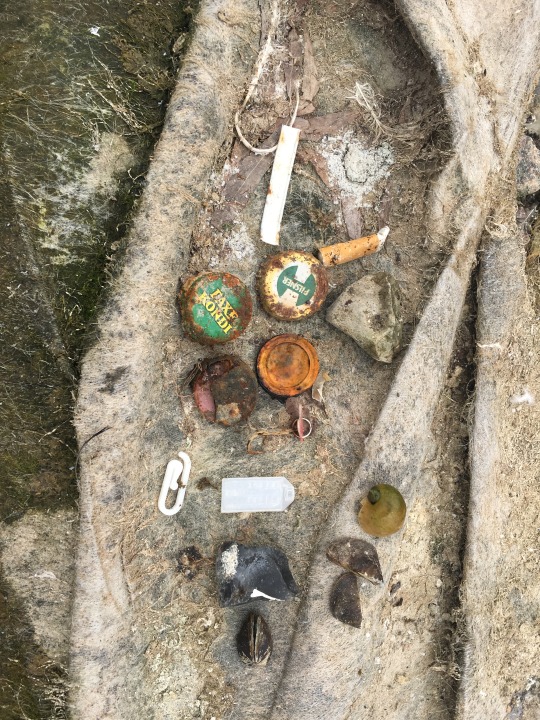
The next three photos are from my first field study with the Urban Ecology course. We traveled to four areas within the city: a shore-side seating area at Sankt Jorgen Sø, Axel Hedes Gade, a small park between some apartments near Axel Hedes Gade, and on a dock in Island Brygge. The field study served as an introduction to the Field Journal assignment we will work on for the entire semester.
Our professor simply asked us to fill the journal with any content relating to our observations of the environments we find ourselves in over our time abroad. Notes, sketches, photos, field samples, anything... we just need to mindfully observe each space. We focus particularly on 3 topics when assessing an environment: (1) Its pros and cons as a habitat for non-human organisms. (2) Pros and cons as a space for human beings. (3) Pros and cons as a space that influences biogeochemical cycles of the city and greater area.
Here is a sample of the garbage scattered around the shore of Sankt Jorgen Sø. I also found broken glass, old clothing, wrappers, bits of plastic, etc. I was also curious about the effect shoreline-type (concrete vs. vegetation) has on the presence of birds.
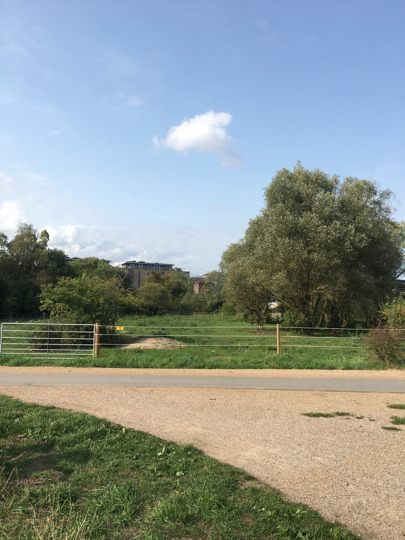
Axel Hedes Gade, the 2nd area that we met at. Our 3rd area is around the apartment buildings off in the distance. This road runs with many others through this very large field I believe to be part of Amager Vest.

The dock within Islands Brygge we finished our field study at.
Going North (photo taken facing south) up the dock would take you to the Islands Brygge Harbor Baths, one of my favorite spots in the city (Be sure to go during the first 2-3 weeks if you’re here for Winter Semester, its only going to get colder and darker outside! WoOOo!)

I visited the Danish Architecture Museum with my 20th and 21st Century Danish Architecture class. We had an hour to be toured through the current exhibition “Welcome Home,” a historical survey of the Danish home.

I cooked a meal for my host family on the Friday of the 2nd full weekend. I picked up pretty much everything at Torvehallerne, the rest was stuff from home.
Trout stuffed with lemon, red onion, dill, and garlic... basted with a sauce made from butter, dark beer, and leftover stuffing. Artichokes filed with one of the many kinds of cheese I found in the fridge and garlic. I also made some caprese salad.
It was simple and delicious, my host family loved it... there were barely any leftovers between just three of us.

Saturday of full weekend #2. Stopped at the National Museum of Denmark for a few hours. If you really love museums, make this an all-day event... 4 hours only gave me enough time to somewhat thoroughly go through the 1st floor (there are 5 if I can remember).

Lur Horns
Nordic wind instruments. They were used to create an atmospheric background sound for Bronze Age rituals. All of these lurs were found in bogs and are from 1200 - 700 B.C.
This might be what they sound like.

Tirsted (10th century AD)
The plate beside the stone lays out an attempt to translate the inscriptions.
“Asråd and Hildvig raised this stone in memory of Frede, their kinsman. And he was then (the terror of men) and he died in Svitjod (Sweden) and was (the foremost of Frigge’s host); and then: all Vikings.”
Doesn’t make much sense, but this room was one of my favorite in the entire museum. About a dozen of these stones are laid out in the room. I read that when these were first erected they were fully painted in bright color. I find the way the words are etched and stained to be fascinating.

The woman of Himlingøje
From the 1st half of the 3rd century AD. 40-50-year-old woman. Within the woman’s mouth is a piece of gold, called a Charon’s coin. The piece was meant to pay for passage to the realm of the dead. Jewels, beads, bangles, rings, a comb, earthenware vessels, a bronze pail, a dish, ladle and sieve, glass cups, and a silver coin were laid among her. (Information from plaque)
This room and a number of others were filled with remains and the variety of items that were placed beside them at the grave.
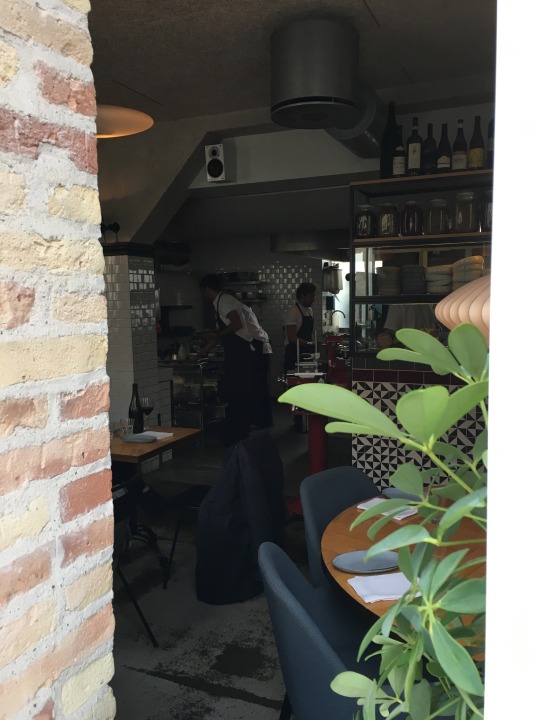
After the museum visit, I had dinner at BÆST, a restaurant that's whipping out freshly fired pizza, fresh veggies, and carefully crafted charcuterie and cheeses. A majority of the ingredients they use come from the eastern Farm of Ideas, a farm founded by Christian F. Puglisi, the lead of BÆST and others like Ralæ, Manfreds, Mirabelle... etc.

Swiss chard, Russian kale, grilled fennel, dried olives, and really really good ricotta. Some GOOD sourdough bread.

Margherita. Tomato sauce, mozzarella, basil. (This was good, but I’d get something with their charcuterie on it if I go another time.)

The view of Peblinge Sø from the bridge of Nørrebrogade. On a weekend night, get together some friends, grab something to go from the great variety of food stops nearby and head on over to the many spots that border these lakes.
I took a stop here after my dinner at BÆST, on my way back to Nørreport Station.

On my Sunday morning run, I found an apple orchard near my house. Off in the distance is a bunch of beehive boxes, some of which contain colonies.

Aarstiderne Farm Harvest Market. A nice festival with food stands to showcase their fresh produce; tours of the farm; local artisans crafting things like chocolate, sea-buckthorn jam, charcuterie, clothing, coffee, etc; a produce market; and general good vibes. Its a bit quite a ways north but was really awesome, I recommend checking in this event and ones like it during your time here.

A stand near one of the produce fields. Showcasing some of the freshly picked produce.

A view of the crowd amongst flowers and produce. This photo and the one below show two different farm areas, both containing pretty much the same vegetation. In this photo they are planting everything together. In the other, they are planting uniformly in rows... perhaps they are testing to see the two different methods effect on how well the plants do.


Ørstedparken a nice park near Torvehallerne. We went here for an Urban Ecology session, continuing our exploration of urban environments as a habitat, a human space, and an influencer of urban biogeochemical cycling.
This is one of many parks that were originally a part of the old defense fortification ring decommissioned in the 1870s. A section of the mote has become the lake and bastions have become small hills within the landscape.

The second field study, this time with my 20th and 21st Century Danish Architecture Course. This is Grundtvigs Kirke, dedicated to N.F.S. Grundtvig, built from 1927 to 1940. The architect is Peder Vilhelm Jensen-Klint... His son and his grandson were involved in the work as well. The church is a centerpiece of a village of similarly styled residential buildings and small storefronts. The style is a mix of Expressionist and Gothic architecture.
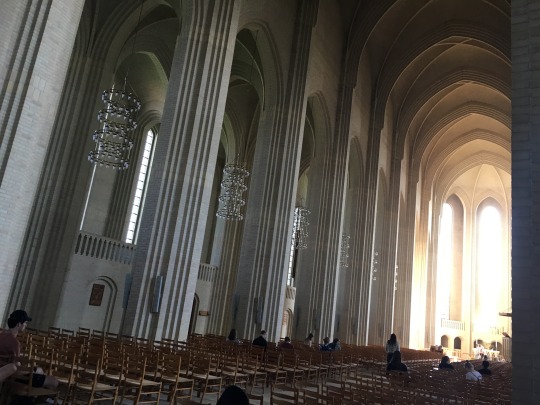
The glowing interior of Grundtvig's Kirke.

Bagsværd Kirke. Architect: Jørn Utzon (you know him, Sydney Opera House). We were to compare and contrast this church with Grundtvigs despite their great contextual and stylistic differences.
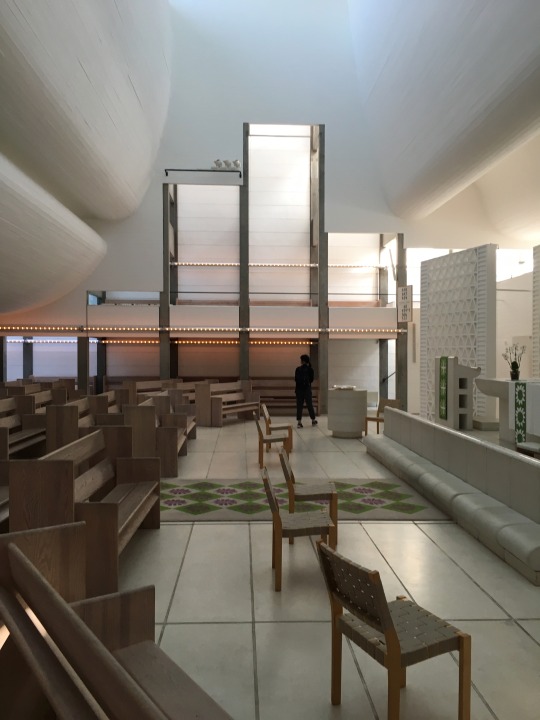
The greatest part of the interior is the vaulting, a sprawling wall of concrete curved into a smooth wave of linen-like white that softly carries light downwards into the room.

The natural lighting works really well with materials and colors. There is a cool, cloud-like softness to the otherwise clean-cut and industrial structure.
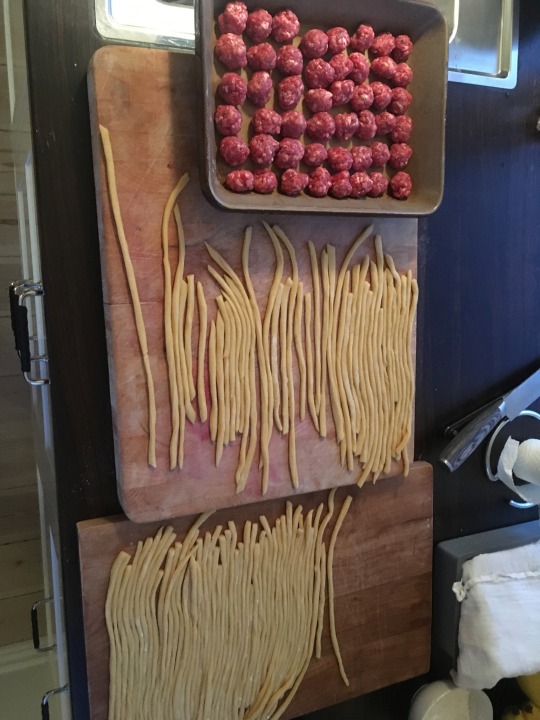
Last Saturday night, I decided to try my hand at making pasta from scratch. It was fairly easy, just 400 grams of wheat flour, 4 eggs, salt, and olive oil for the dough. I let it sit, rolled it out, and then cut it into strips. The small meatballs, or pallotine, are just beef, salt, pepper, olive oil. This was my inspiration, I am far from it.

Everything coming together. Pasta’s cooking in salted water, the red sauce has been cooking for around 3 hours, and the meatballs are frying in olive oil.

It’s not beautiful, but it was quite delicious. I’ll be ready for next time!

Prolog Coffee Bar over in Kødbyens District, the best coffee I have had in Copenhagen so far. 2-3 workers serving up stupid good coffee in the small alley-like interior amongst a number of other really cool food stops. I HIGHLY recommend coming here to get a cup and check out the other spots nearby.
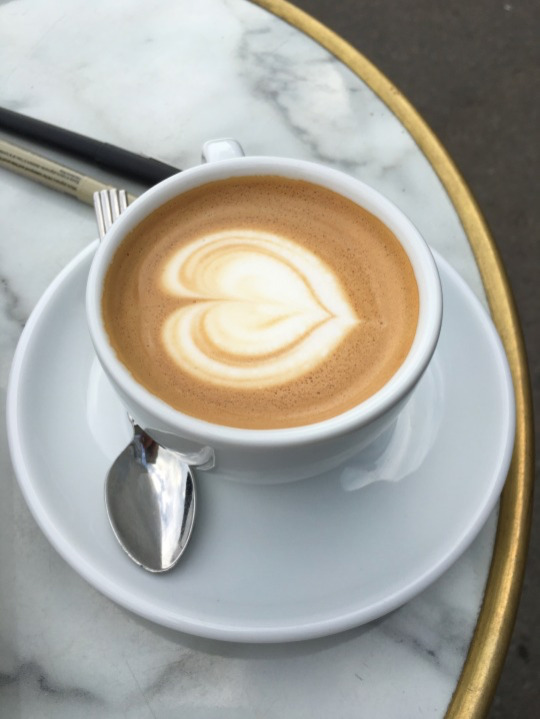
This is it. A cortado.
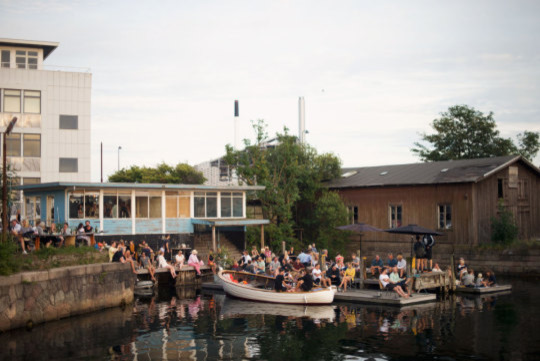
I did not get my own photo of this place, La Banchina, my current favorite spot in Copenhagen. The place serves up a variety of natural wine, beer, baked goods, snacks, and really good, creative meals out of this unusually wonderful place (the kitchen is in a mini greenhouse building). Take a dip into the harbor water, jump into their sauna (50 Kroner), and make some friends. I hope to find myself here many more times, even as the days become dark and damp. (This place is in its full glory during the summertime).
The surrounding area of Refshalevej is worth checking out on its own, I’ll be back to revisit the place in a post sometime later on.

Everyone gathered around for some Snobrød, a Danish tradition of baking bread on a stick. This was available to everyone that stopped by, you just had to find your own stick... this beats roasting marshmallows.
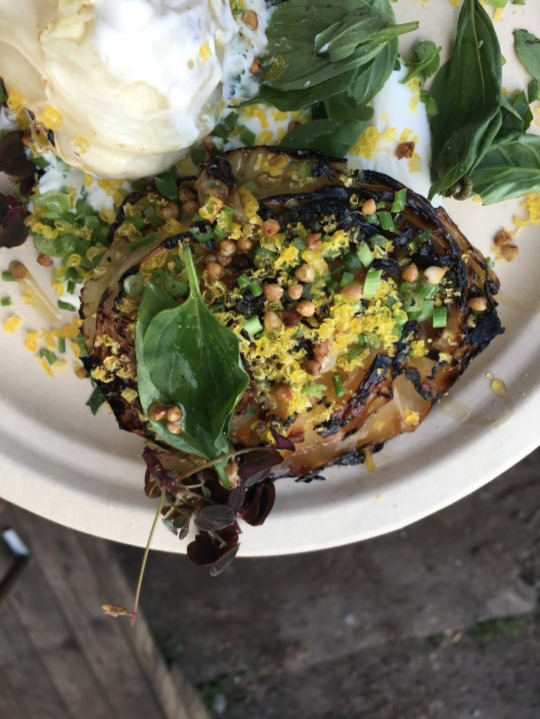
Cabbage, roasted buckwheat, cured egg, fresh creme, chives, and a couple other things. I started eating it before I remembered that I should take a photo of it.
There is never a set menu, they decide what to serve based on what's available and what's on their mind.

Sunset on Vejilesø near my train stop at Holte.
I’ll be posting about Core Course week next!
0 notes
Video
Tak til DR P4 Sjælland
Hvis N.F.S. Grundtvig havde en smartphone :D
#endelafhistorien
0 notes
Text
[Free eBook] Living Wellsprings: The Hymns, Songs and Poems of N.F.S. Grundtvig [19th C Danish Literature]
Living Wellsprings: The Hymns, Songs and Poems of N.F.S. Grundtvig edited and translated by Edward Broadbridge, British expat and long-term resident of Denmark, is the 2nd volume in the N.F.S. Grundtvig: Works in English series collecting and translating the works of the noted Danish historical figure, free for a limited time courtesy of publisher Aarhus University Press in Denmark.
This volume in the series contains the translated poetry, psalms, and other songs written by N. F. S. Grundtvig, a highly influential 19th century Danish author, philosopher, and teacher whose proposed models for continuing education are still used today, and includes an introduction by author Uffe Jonas, who has composed a number of musical settings for Grundtvig's words. While not exactly an annotated edition, many of the psalms and poems are footnoted with brief but helpful explanations for references and imagery which might not be obvious to a non-Danish, non-19th century, non-religious reader; and there's a listing of the context of each work as it fits into the late author's personal timeline and creative intentions.
Offered through the month of March, available DRM-free worldwide.
Free for a limited time throughout March as their English-language Free Book of the Month selection directly @ the university's special promo page (DRM-free PDF available worldwide, approx 26 mb), and you can read more about the book on its regular catalogue page.
If you are interested, there's also a Danish-language newspaper article about the translator's efforts to promote the works of Grundtvig in other countries in relation to this series, including forays into China and the US.
Description 'All my Living Wellsprings are in you', says God to His people in Psalm 87:7. The title seems apt for the poetic works of the Danish poet-pastor N.F.S. Grundtvig (1783-1872) who wrote over a third of the hymns in the present Danish Hymnbook as poet, adaptor, or translator. Living Wellsprings contains a wide selection of Grundtvig's best-known hymns and songs along with a number of his shorter poems - 162 items in all - in new translations. Ths is the first comprehensive collection of the poetry of one of the pre-eminent builders of the Danish nation, who regarded Danish history, language, and song as absolutely indispensable to the life of what he termed 'the state, the church, and the school'.
As part of its agenda to digitalise and translate Grundtvig's vast output, the Grundtvig Study Centre at Aarhus University is pleased to publish this second volume in the series, 'N.F.S. Grundtvig: Works in English'. Volume 1, The School for Life, contains Grundtvig's major writings on education. Future volumes will deal with his philosophy, his politics, and his theology.
#n. f. s. grundtvig#danish literature#19th century literature#danish poetry#literature in translation#religious literature#danish historical figures#aarhus university press#academic ebook
0 notes
Photo

Erik Grip (73 today) is a Danish singer-songwriter i the folk vein. He has recorded 39 albums, and been active in the folk music scene since 1963. His best-known work is the 1983 album with recordings of new melodies for the songs and hymns of N.F.S. Grundtvig, but his recordings also comprise Danish versions of Ulf Lundéll, the Swedish troubadour, and songs based on the poems of Bo Green Jensen and many other Danish poets...
#music#folk music#folk#singer-songwriter#erik grip#1960s#1980s#n.f.s. grundtvig#bo green jensen#ulf lundéll
2 notes
·
View notes
Photo

Norwegian SE-RPR, OSL ENGM Gardermoen Boeing 737-800, cn 42081, N.F.S. Grundtvig See it here:
1 note
·
View note
Quote
''If we regard man as a sensible beast, a conscious animal who by nature sees only his own advantage, it follows that the “natural state” is one that leads to all individuals becoming mutually hostile and envious when they reach the age of discretion. Only mutual fear can make the one allow the other undisputed possession of something that pleases a sensible beast. Only the conversational and sexual instinct account for his need of company. Only fear and rapacity explain why he joins forces in a State gang under a kind of chief. If this is truly the case, then Rousseau was undoubtedly right to claim that the State is an unnatural hospital and prison in which the medicine is worse than the illness, as well as being a teachers’ college for rogues, a greenhouse for unnatural vices, and a graveyard for the freedom of man.''
N.F.S. Grundtvig
0 notes
Photo

Peter Willemoes (May 11, 1783 - 1808) was a Danish sea officer who was singled out for praise by Lord Nelson after the Battle of Copenhagen in 1801, where the young Sub-Lieutenant Willemoes commanded a floating gun battery which lay directly across from Lord Nelson’s HMS Elephant, a ship of the line, on which Willemoes inflicted a good deal of damage.
Willemoes fell in the Battle of Zealand Point where the British defeated the last remaining Danish ship of the line, Prinds Christian Frederik, ending his life at age 24.
He was celebrated in song (by no less than N.F.S. Grundtvig), and the arts as a true Danish hero, and ships in the Danish navy are still named after him. Here is a painting by Christian Mølsted from 1901, showing the then 17-year-old Willemoes putting heart into his men on the floating battery during the Battle of Copenhagen
#naval hero#1800s#danish hero#battle of copenhagen#peter willemoes#lord nelson#hms elephant#battle of zealand point#gun battery#ship of the line#n.f.s. grundtvig#christian mølsted#1900s#Prinds Christian Frederik#sub-lieutenant#admiral nelson
1 note
·
View note
Photo

N.F.S. Grundtvig (Sept. 8, 1783 - 1872) wrote more hymns than any other Danish poet, and his words are still sung every Sunday in churches across the land. Here are the two first stanzas from one of my favorite autumn hymns, “Nu falmer skoven trindt om land”. These things are hard to translate!
In addition Grundtvig had progressive ideas about education for the rural populace which led to the foundation of the Danish folk high-school movement, which is also still alive...
#poetry#hymns#danish poet#n.f.s. grundtvig#folk high schools#1840s#christian hymns#protestantism#popular education#forest#autumn#autumn leaves#bird migration#symbolism#translation
4 notes
·
View notes